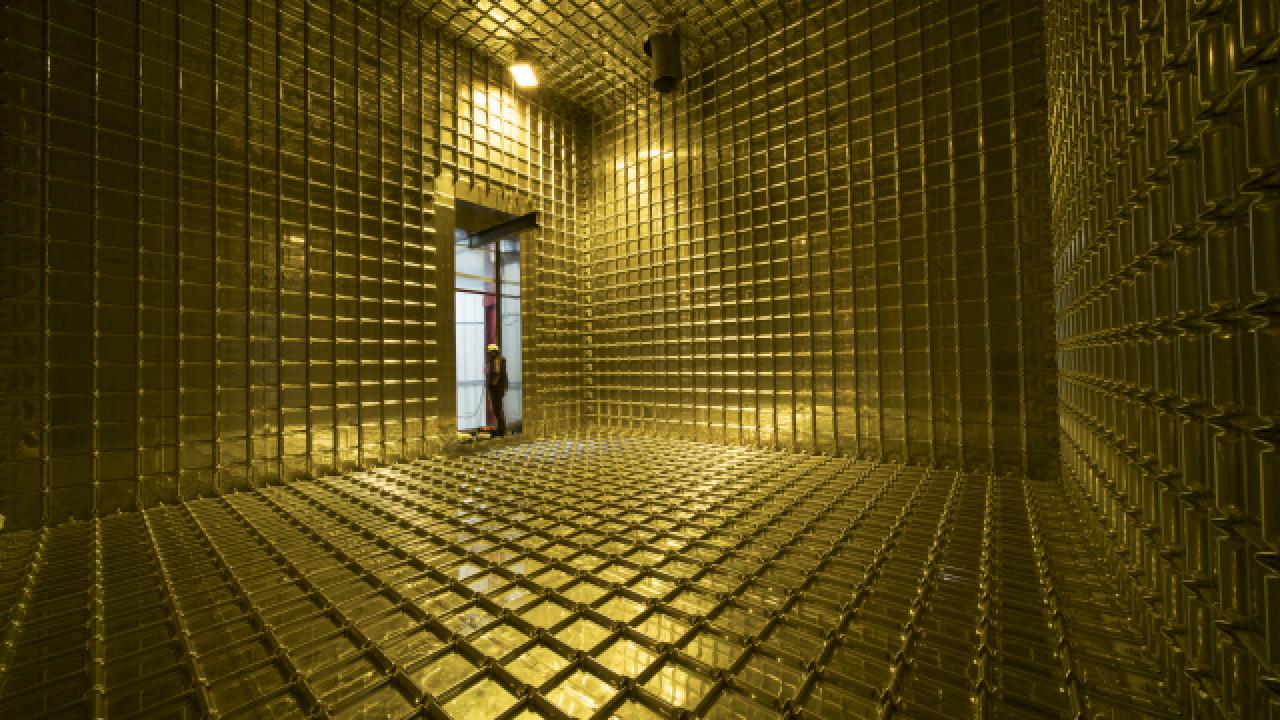
First Particle Tracks at Prototype for DUNE Underground Neutrino Experiment
The largest liquid-argon neutrino detector in the world has just recorded its first particle tracks, signaling the start of a new chapter in the story of the international Deep Underground Neutrino Experiment (DUNE).
DUNE’s scientific mission is dedicated to unlocking the mysteries of neutrinos, the most abundant (and most mysterious) matter particles in the universe. Neutrinos are all around us, but we know very little about them. Yet neutrinos may help answer one of the most pressing questions in physics: why we live in a universe dominated by matter. In other words, why we are here at all.
A number of UC Davis scientists are affiliated with the project. Professor Robert Svoboda, chair of the department of physics was principal investigator of the project from 2009 to 2014, and project spokesperson from 2010 to 2013. Professor Emilija Pantic, postdoctoral researcher Jingbo Wang, graduate student Steven Gardiner and Hans Berns, research engineer at the Crocker Nuclear Laboratory have all worked on the DUNE project or related experiments. CERN staff scientist Albert De Roeck, head of the Neutrino Platform Facility at CERN, is an adjunct professor at UC Davis.
The enormous ProtoDUNE detector – a gigantic cube the size of a three-story house – was built at CERN as the first of two prototypes for a much, much larger detector for the DUNE project, hosted by the U.S. Department of Energy’s Fermi National Accelerator Laboratory in the United States. It is the first time CERN is investing in infrastructure and detector development for a particle physics project in the U.S.
800 tons of liquid argon a mile underground
The ProtoDUNE detector took two years to build and eight weeks to fill with 800 tons of liquid argon, which needs to be kept at temperatures below -184 degrees Celsius (-300 degrees Fahrenheit). The detector records traces of particles in that argon, from both cosmic rays and a beam created at CERN’s accelerator complex. Now that the first tracks have been seen, scientists will operate the detector over the next several months to test the technology in depth.
The full-size DUNE detector modules will be 20 times larger than the prototypes. They will be built a mile underground at the Sanford Underground Research Facility in South Dakota. More than 1,000 scientists and engineers from 32 countries spanning five continents – Africa, Asia, Europe, North America and South America – are working on the development, design and construction of the DUNE detectors. The groundbreaking ceremony for the caverns that will house the experiment was held in July of 2017.
Eventually DUNE will study both neutrinos and their antimatter counterparts. Scientists will look for differences in behavior between neutrinos and antineutrinos, which could give us clues as to why the visible universe is dominated by matter.
DUNE will also watch for neutrinos produced when a star explodes, which could reveal the formation of neutron stars and black holes, and will investigate whether protons live forever or eventually decay.
— Adapted by Andy Fell, UC Davis News and Media Relations, for the UC Davis Egghead research blog.
